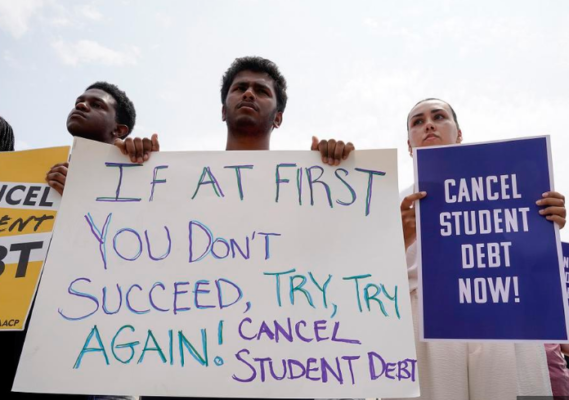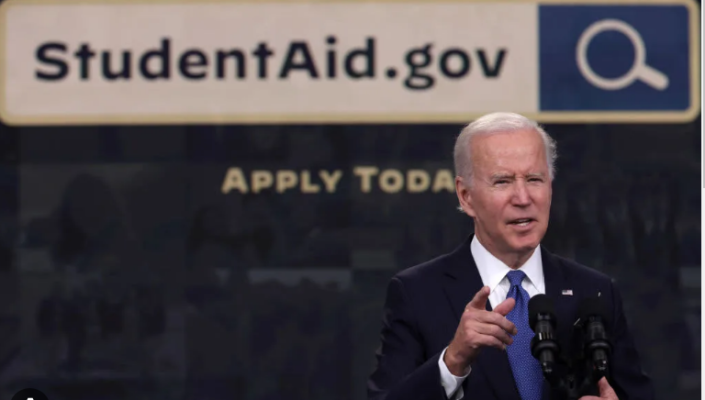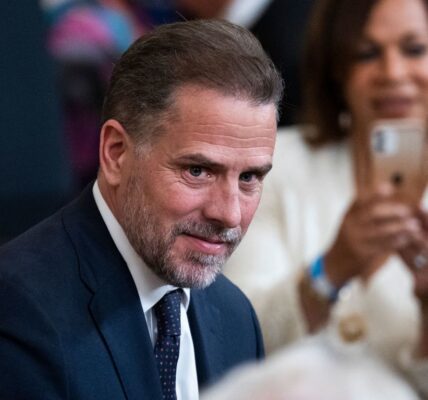Early Implementation of the SAVE Repayment Plan
In a significant development, the Biden administration has expedited the commencement of student loan cancellations, with the process slated to kick off in February. Originally scheduled for July under the new SAVE repayment plan, this acceleration aims to swiftly provide relief to borrowers. President Joe Biden, in a statement on Friday, emphasized the administration’s commitment to acting promptly, affording borrowers much-needed breathing room in their quest to move beyond the burdensome shackles of student debt.
Eligibility Criteria for Swift Loan Cancellation
Under the accelerated plan, borrowers will be eligible for loan cancellation if they meet specific criteria. Enrolment in the new SAVE plan, an initial borrowing amount of $12,000 or less for college expenses, and a track record of at least 10 years of payments are prerequisites for eligibility. The exact number of borrowers set to benefit from the February cancellation remains uncertain, as the Education Department has yet to provide specific figures.
The Origins of the
Loan Repayment Plan
President Biden had introduced the SAVE repayment plan last year, concurrently with a separate initiative to cancel up to $20,000 in loans for millions of Americans. While the Supreme Court struck down the widespread forgiveness plan, the repayment plan has thus far avoided intense legal scrutiny. Attempts by Republicans in Congress to block the plan through legislation and resolutions proved unsuccessful.
Generous Terms of the SAVE Plan
The SAVE plan, designed to replace several existing income-driven repayment plans, offers more generous terms. Unlike its predecessors, which required 20 or 25 years of Loan payments for cancellation, the SAVE plan shortens this period to as little as 10 years. Additionally, the plan significantly reduces monthly payments for a substantial number of borrowers.
Addressing Concerns and Controversies pertaining to loan
Despite the administration’s efforts to provide relief, the new repayment plan has faced criticism and controversy, particularly from Republicans. Detractors argue that it disproportionately benefits wealthier Americans with college degrees, potentially burdening taxpayers who did not attend college. Some even view it as an indirect attempt to make community college free, a proposal that, despite Biden’s campaign support, failed to garner Congressional approval.
Balancing the Scales:
In a counterintuitive twist, the Biden administration contends that the relief offered next month will particularly aid Americans who attended community colleges. These institutions, known for their lower costs compared to four-year universities, are expected to propel community college students “on a faster track to debt forgiveness than ever before,” according to Education Secretary Miguel Cardona.
Paradoxically, the plan acknowledges that those with smaller student loan balances tend to face more significant struggles. This struggle is attributed to a substantial number of Americans who take out student loans but fail to complete their degrees, leaving them burdened by debt without the anticipated increase in income.
Republican Opposition and Criticisms
While the Biden administration pushes forward with its student debt relief plans, Republicans remain vocal opponents. Their primary arguments center on the notion that the new loan repayment plan disproportionately aids individuals with college degrees, potentially placing an undue burden on taxpayers who did not pursue higher education. Some critics frame it as an indirect strategy to advance the concept of free community college, a proposal that lacks widespread support in Congress.
Implementation Details and Future Plans
As the Education Department gears up for the February rollout, it plans to automatically wipe away balances for eligible borrowers enrolled in the SAVE plan. Borrowers who may be eligible but have not enrolled will receive communication from the department, streamlining the process.
Gradual Unveiling of the SAVE Plan
Certain provisions of the plan have already been in effect since last summer. Notably, interest does not accumulate as long as borrowers make monthly payments, and more Americans now qualify to reduce their monthly bill to $0.
Upcoming Changes in July
Additional facets of the plan are slated to take effect in July. These include a change limiting borrowers’ payments to 5% of their discretionary income, down from the previous 10% in other income-driven repayment plans.
Ongoing Pursuit of Widespread Cancellation
Parallel to the implementation of the SAVE plan, the Biden administration is actively pursuing another plan for widespread loan cancellation. Following the Supreme Court’s rejection of the initial proposal, the Education Department is working on a new approach under a different legal authority. This proposed plan aims to provide targeted relief to specific groups of borrowers, indicating a multifaceted strategy in addressing the complex issue of student debt.
Read More:
- Las Vegas Entrepreneurs Pursue Compensation Amidst Formula 1 Impact
- Texas Oil and Gas production : Multitude of Opportunities
In conclusion, the acceleration of student loan cancellations under the SAVE plan reflects the Biden administration’s commitment to providing timely relief to borrowers. As the plan unfolds, its impact on various segments of the population, coupled with ongoing political debates, will shape the landscape of student debt policies in the United States.




